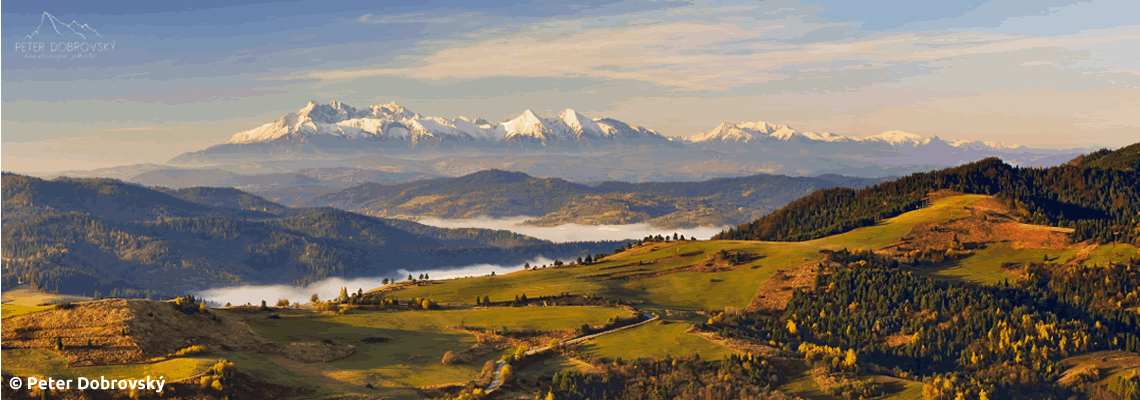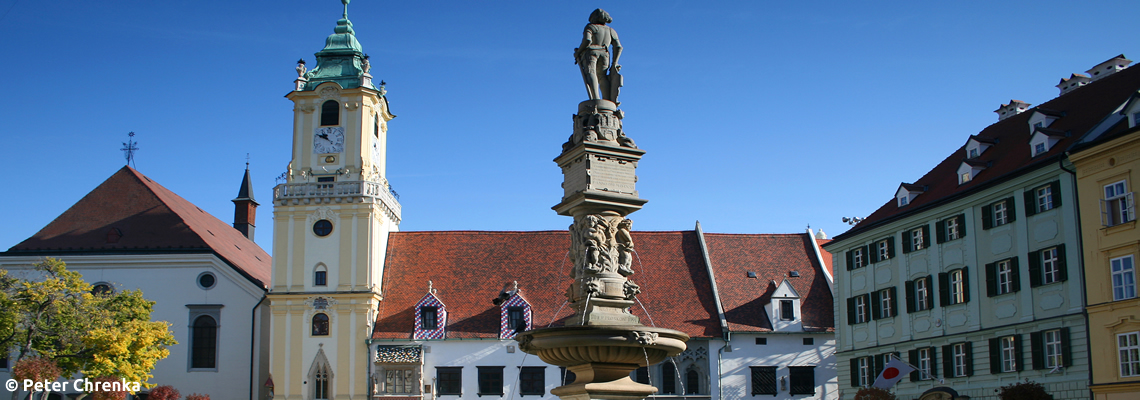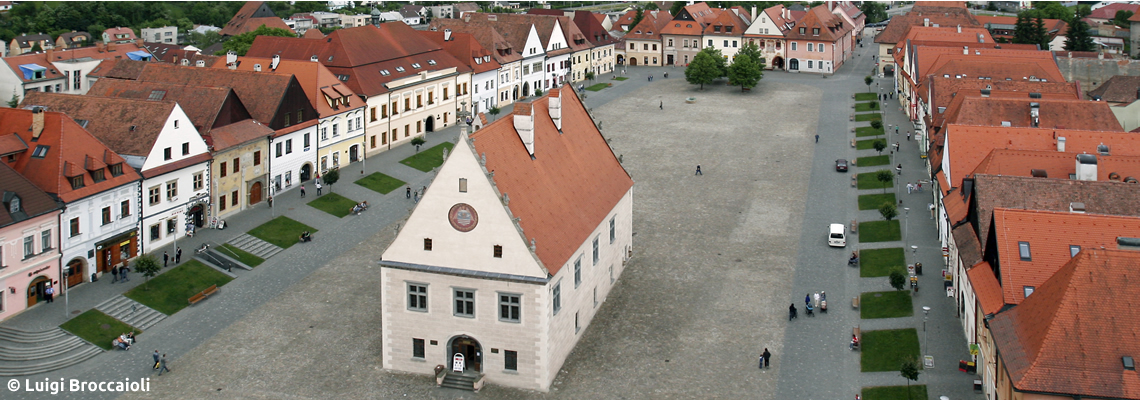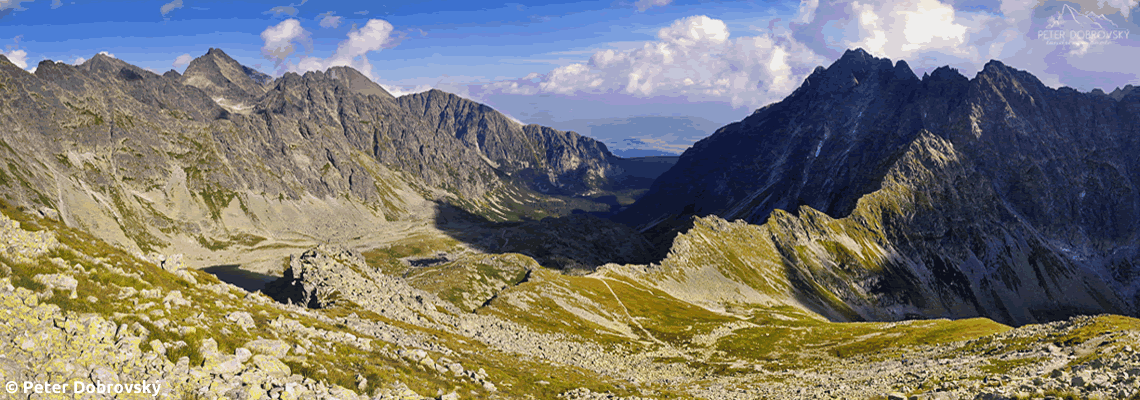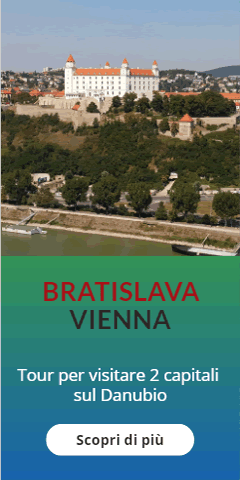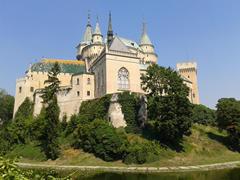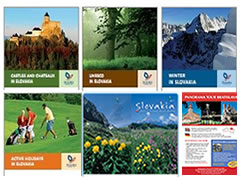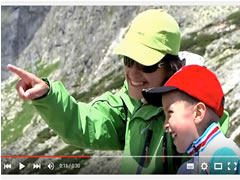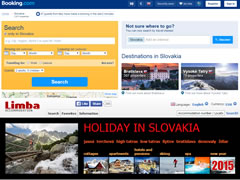Sidebar
MARTIN SLOBODA COLLECTION:
BRATISLAVA - A PICTORIAL GUIDE
 The most popular guidebook to Bratislava comes currently in 13 different languages. High quality printing, paper and photographs make it the first choice for most visitors of Bratislava. The guidebook contains 14 engravins and graphics prints from 14th to 19th centuries. 100 quality photographs of Bratislava and 2 maps of the city center. The text is logically divided into chapters representing the city's history and major sites. Other sights are described in the Walking Tour Chapter. Each described site has a number corresponding with nuber in the map. The book also tells the history of wine-making and contains descriptions of castles in the surroundings. Visitors will appreciate a list of opening hours of galleries, musems and other attractions in the city.
The most popular guidebook to Bratislava comes currently in 13 different languages. High quality printing, paper and photographs make it the first choice for most visitors of Bratislava. The guidebook contains 14 engravins and graphics prints from 14th to 19th centuries. 100 quality photographs of Bratislava and 2 maps of the city center. The text is logically divided into chapters representing the city's history and major sites. Other sights are described in the Walking Tour Chapter. Each described site has a number corresponding with nuber in the map. The book also tells the history of wine-making and contains descriptions of castles in the surroundings. Visitors will appreciate a list of opening hours of galleries, musems and other attractions in the city.
e-mail: This email address is being protected from spambots. You need JavaScript enabled to view it.">This email address is being protected from spambots. You need JavaScript enabled to view it.
JAROSLAV PROCHAZKA:
TATRY/HOHE TATRA/THE HIGH TATRAS
 This colour publication presents the beauty and attraction of 19 valleys, over 50 peaks, 4 villages and 8 highmount chalets. The High Tatras from Krivan and Strbske Pleso in the west, through southern valleys and villages of Smokovce and Tatranska Lomnica, further to the east and from Belianske Tatras and Zdiar into the northern valleys of The High Tatras- Javorova and Bielovodska valley are shown on.
This colour publication presents the beauty and attraction of 19 valleys, over 50 peaks, 4 villages and 8 highmount chalets. The High Tatras from Krivan and Strbske Pleso in the west, through southern valleys and villages of Smokovce and Tatranska Lomnica, further to the east and from Belianske Tatras and Zdiar into the northern valleys of The High Tatras- Javorova and Bielovodska valley are shown on.
Publishing house: Neografia Martin
www.neografia.sk
e-mail: This email address is being protected from spambots. You need JavaScript enabled to view it.">This email address is being protected from spambots. You need JavaScript enabled to view it.
EUGEN LAZISTAN:
SLOVENSKO
 Representative photographic full colour book about Slovakia.
Representative photographic full colour book about Slovakia.
Publishing house: Neografia Martin
www.neografia.sk
e-mail: This email address is being protected from spambots. You need JavaScript enabled to view it.">This email address is being protected from spambots. You need JavaScript enabled to view it.
VLADIMIR BARTA, JAROSLAV LIPTAY:
CASTLES CHÂTEAU MANOR HOUSES
 This book presents short information and photographs of 50 most important Slovak castles, concentrating in particularly on the history of the accessible castles to the public. The photographs in the book make acquaintance to the readers the appearance (known and and unknown) of the castles but also the interiors of some château or manor houses in Slovakia. The book is written in Slovak, German, English, French and Hungarian language.
This book presents short information and photographs of 50 most important Slovak castles, concentrating in particularly on the history of the accessible castles to the public. The photographs in the book make acquaintance to the readers the appearance (known and and unknown) of the castles but also the interiors of some château or manor houses in Slovakia. The book is written in Slovak, German, English, French and Hungarian language.
Publishing house: AB ART press
e-mail: This email address is being protected from spambots. You need JavaScript enabled to view it.">This email address is being protected from spambots. You need JavaScript enabled to view it.
LADISLAV STRUHAR, BOHUSLAV PIATKO:
SLOVAKIA, a Verse in the poem of Europe
 The book is divided in the separate sections, in line with the state's latest administrative division in alphabetical order. It's accompanied by maps, infomations and splendid photographs. The value of the book is informative but also artistic, the photographs are accompanied by poetic verses. The book is written in Slovak and English language.
The book is divided in the separate sections, in line with the state's latest administrative division in alphabetical order. It's accompanied by maps, infomations and splendid photographs. The value of the book is informative but also artistic, the photographs are accompanied by poetic verses. The book is written in Slovak and English language.
Publishing house: MEDIA SVATAVA, spol. s.r.o.
KAROL KALLAY:
SLOVENSKO - SLOWAKEI - SLOVAKIA
 The book has four chapters and its purpose is to make acquaintance Slovakia to the foreign tourists, writing on its attractive nature, architecture, story, culture, sport possibilities and recreational activities. The book with the attractive photographs is like a mosaic on the exceptional natural, historical and cultural beauties that charmed the authors. The book is written in the Slovak, German and English language.
The book has four chapters and its purpose is to make acquaintance Slovakia to the foreign tourists, writing on its attractive nature, architecture, story, culture, sport possibilities and recreational activities. The book with the attractive photographs is like a mosaic on the exceptional natural, historical and cultural beauties that charmed the authors. The book is written in the Slovak, German and English language.
Publishing house: Slovart, spol. s.r.o.
By train
Most of the Slovak towns are connected by trains with daily connections. Connection with smaller towns in Slovakia are available only by bus, but it is possible to go by train almost everywhere. The train is probably more comfortable and generally less expensive for long trips.
To find the train connections of the domestic destinations clicks to the following links:
By Bus
The service of bus is extended and available in every part of the Slovakia. Although less expensive than the train, bus can take considerably longer to reach their destination. Sometimes, however, it can be more convenient to take a bus since many of the schedules and routes don't overlap by the train service. When you travell by bus from a town to another, you can buy tickets as you board after telling the driver your destination.
Search for the bus lines in the Slovakia:
By car
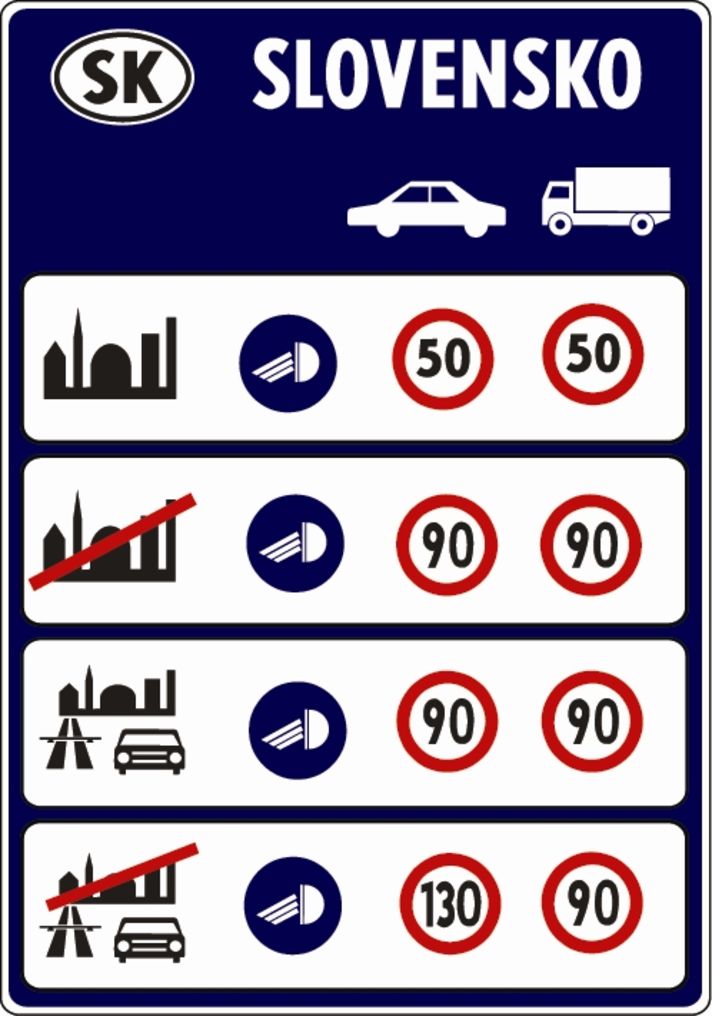 On the main roads the speed limit is 90 km/h. On the highway the speed limit is 130 km/h, in the cities and villages it is 50 km/h. Children until 12 years of age must not be seated on front seat. The safety belts have to be fastened on the front seat and back-seat also in towns. To the requisite equipment of vehicle belong a medicine-chest, towing-rope, accident triangle, spare tire.
On the main roads the speed limit is 90 km/h. On the highway the speed limit is 130 km/h, in the cities and villages it is 50 km/h. Children until 12 years of age must not be seated on front seat. The safety belts have to be fastened on the front seat and back-seat also in towns. To the requisite equipment of vehicle belong a medicine-chest, towing-rope, accident triangle, spare tire.
An International Driving License is valid in Slovakia and all the road signs and rules comply the European standards. On freeways and highways drivers must have the toll labels that can be purchased at border crossings, post offices, and gas stations.
From 1 January 2016. It is possible to buy a vignette in electronic form . It means in practice that he/she purchases the electronic vignette in electronic form, while he/she receives only the confirmation of payment/tax document for the electronic vignette payment. The main benefit of the electronic vignette is that once the Customer purchases it:
More detailed information on electronic vignette and possibility to purchase online on the web: Eznamka
The costs of the toll labels for the year 2016:
|
1 day |
10 days |
30 days |
year |
Vehicles until 3,5 t |
--- |
10 € |
14 € |
50 € |
Vehicles above 3,5 t |
||||
Vehicles above 12 t |
|
Town destinations
- Bratislava - Vienna 60 km
- Bratislava - Prague 350 km
- Bratislava - Zilina 210 km
- Bratislava - Banska Bystrica 213 km
- Banska Bystrica - Kosice 237 km
- Banská Bystrica - Poprad 140 km
- Zilina - Kosice 265 km
Important telephone numbers:
- SOS, emergency calls 112
- Police 112
- Fire/Rescue 112
- PAmbulance/Rescue 112, 16155
- Road service (ASA Slovakia) 18 124
Maps of the Slovakia:
Car Rental

Promotional brochures
"Slovakia - The country where we live":
Download the brochure:
English Version (12,3 Mb)
Slovak Version (12,3 Mb)
French Version (12,3 Mb)
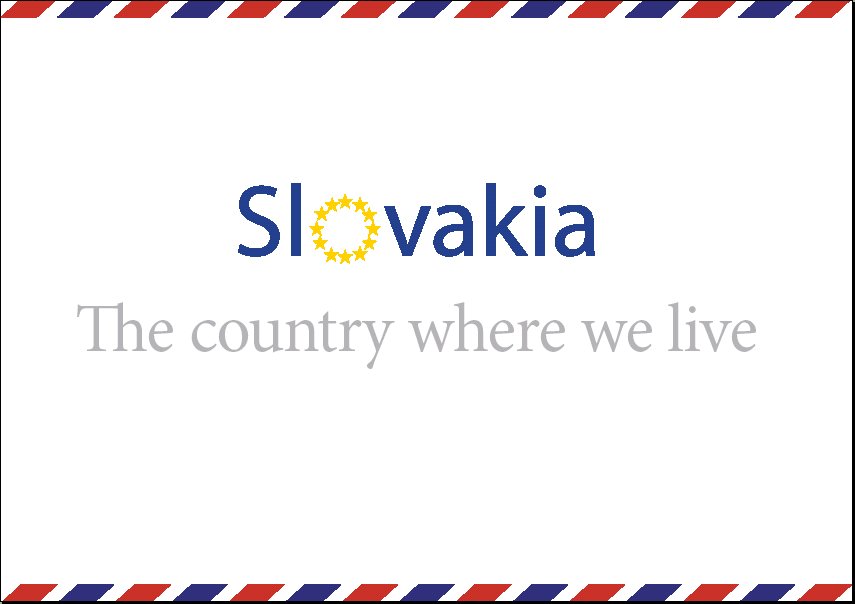
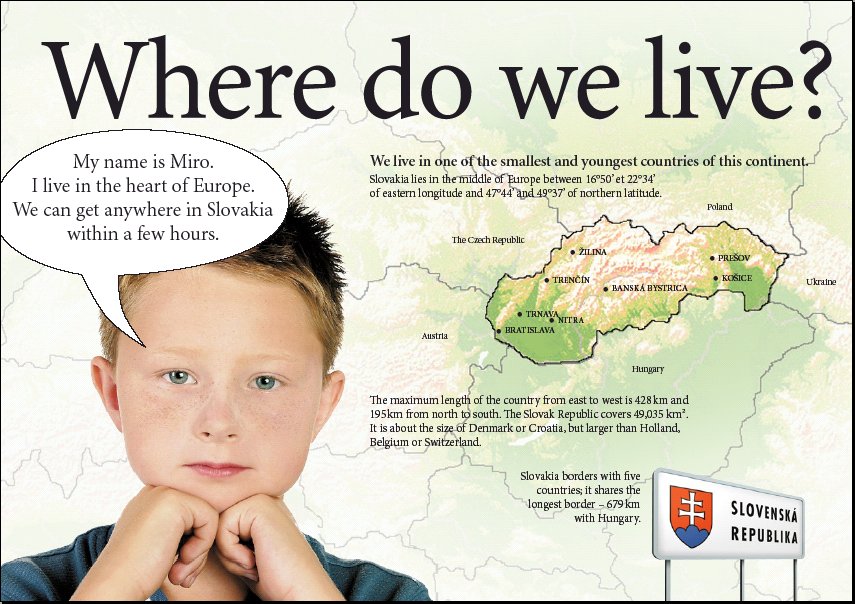
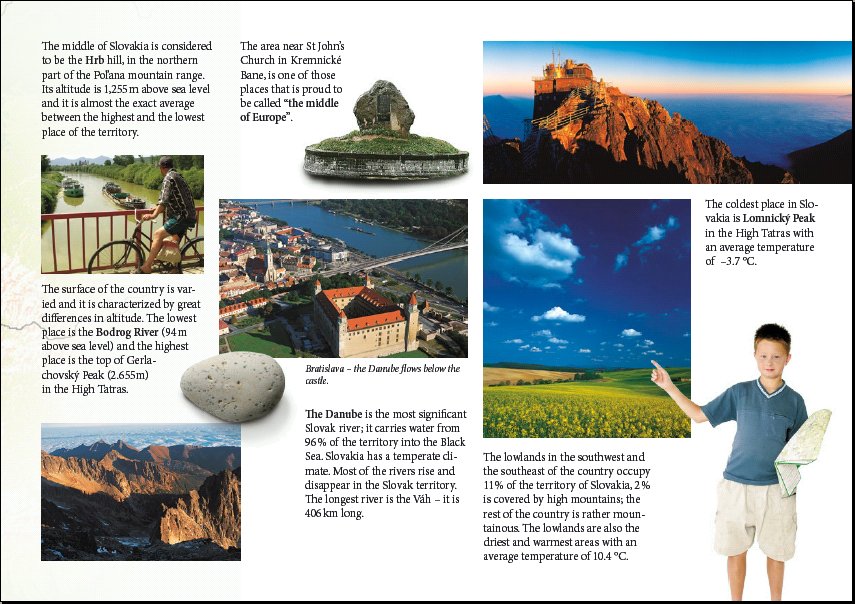
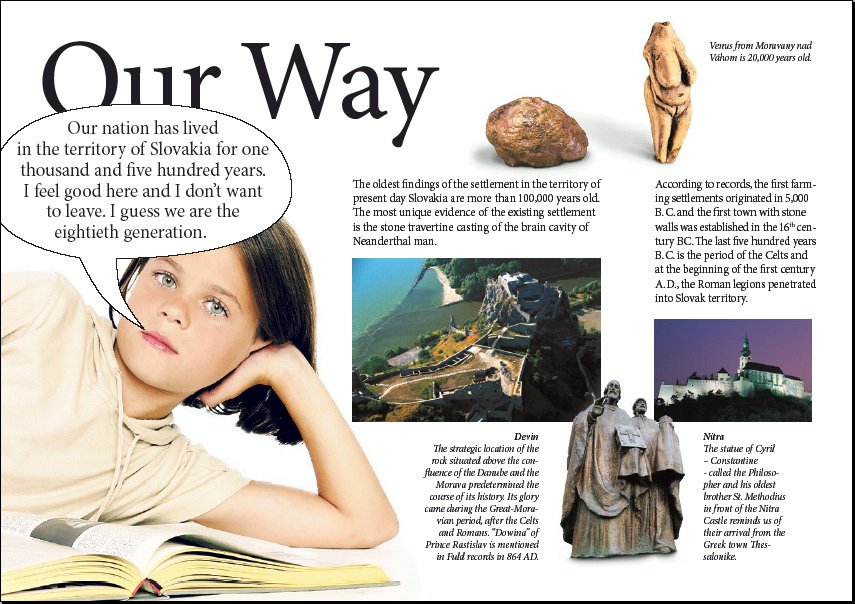
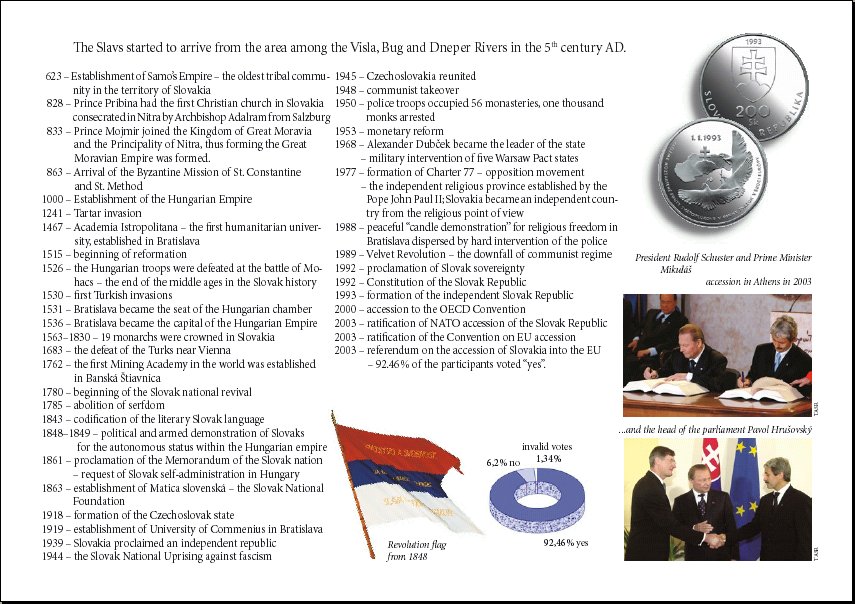
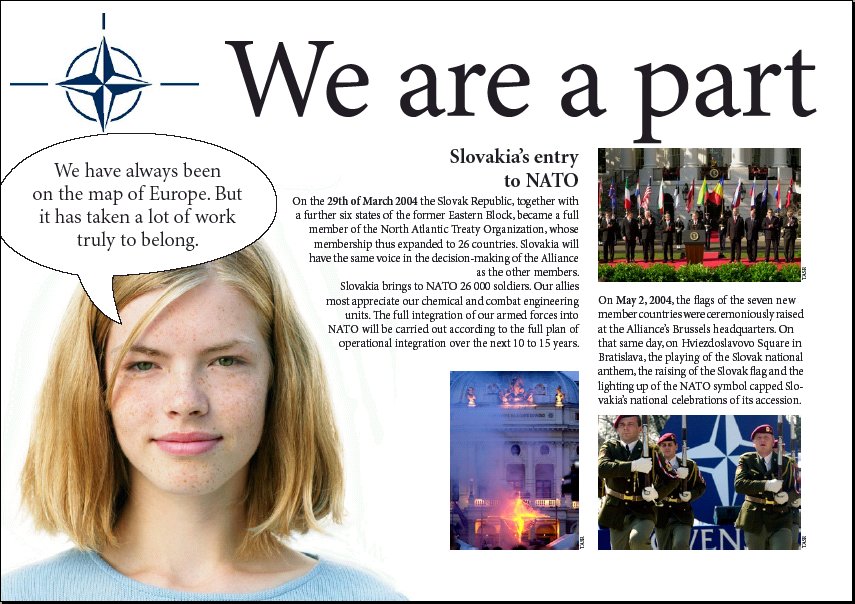
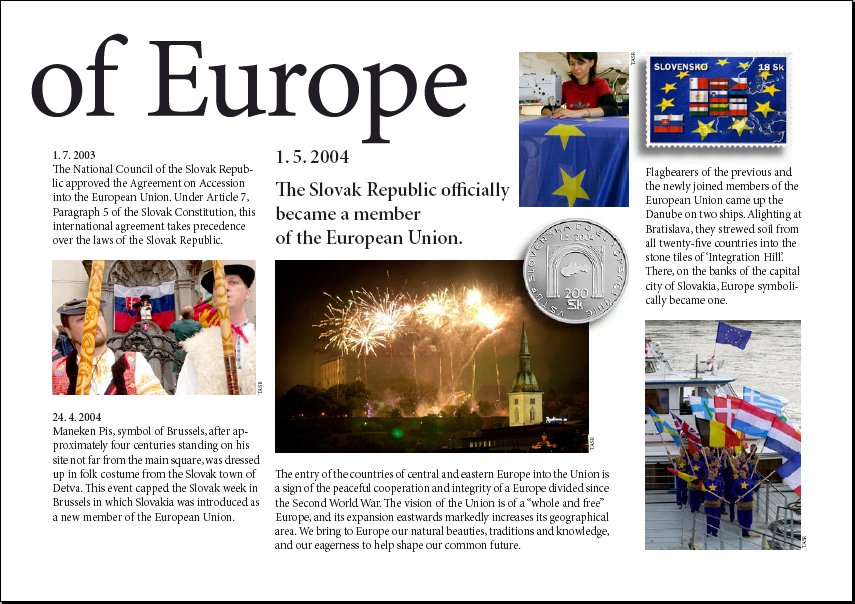

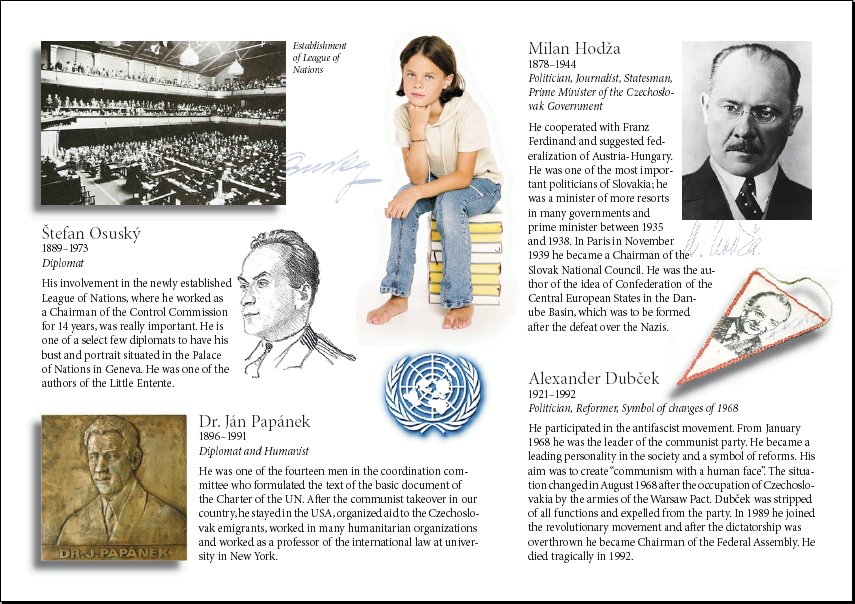
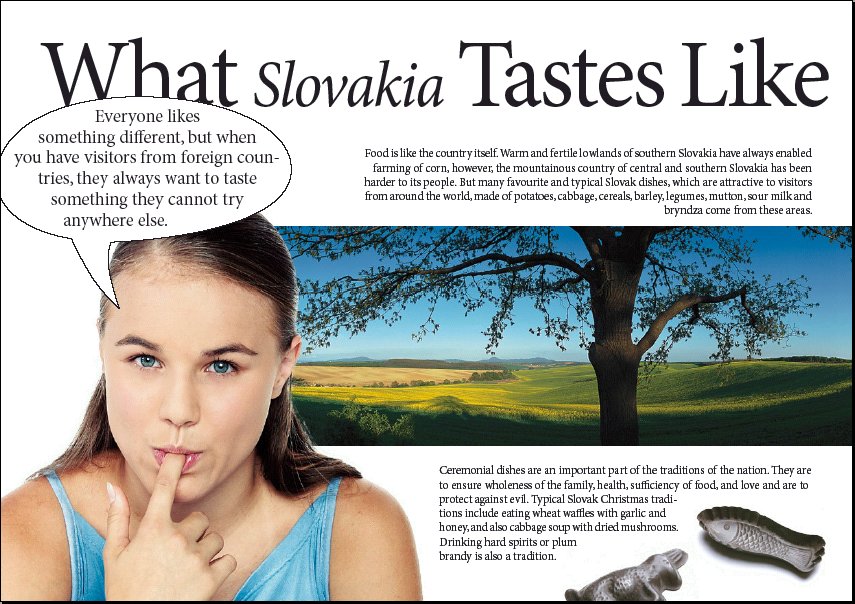

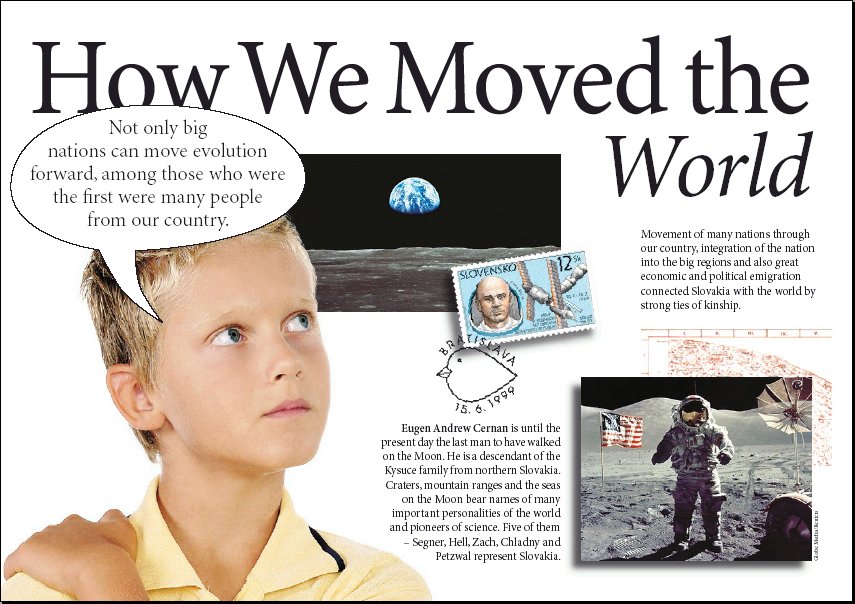
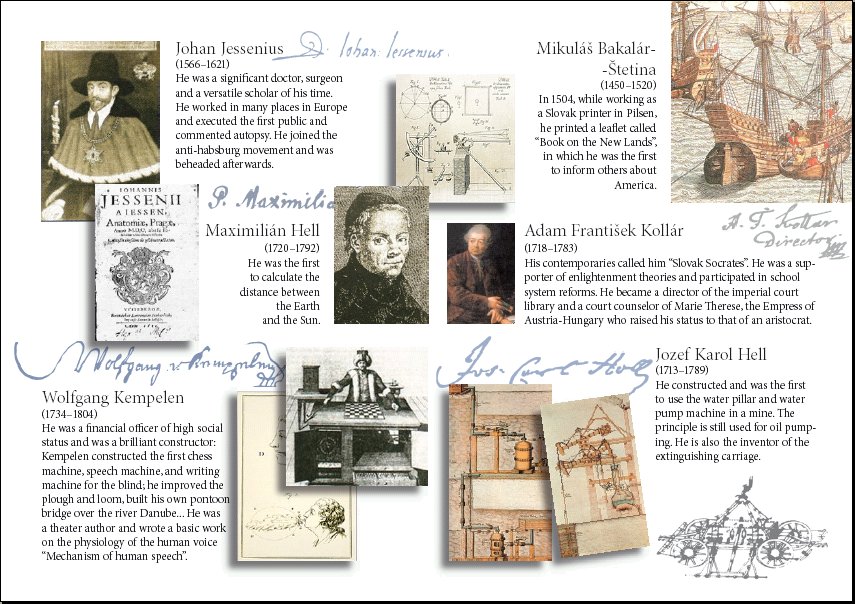
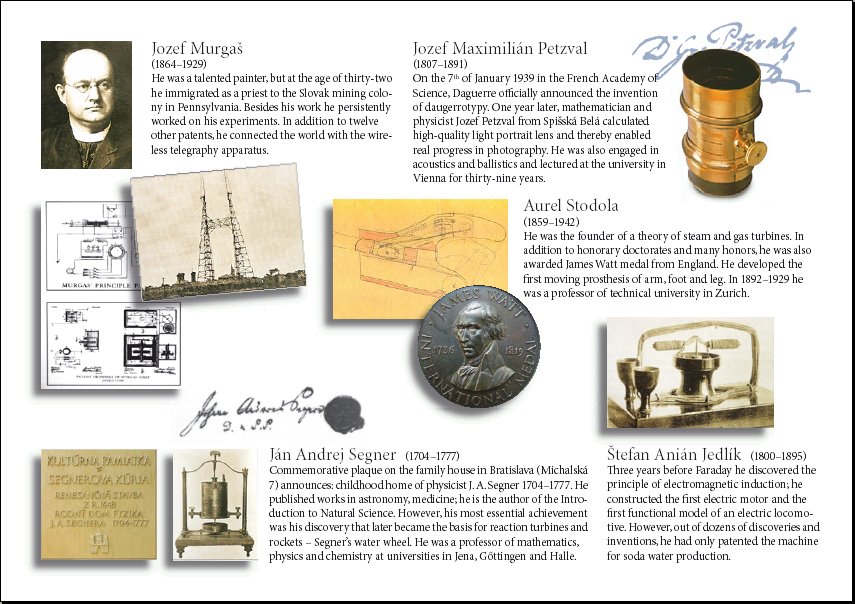
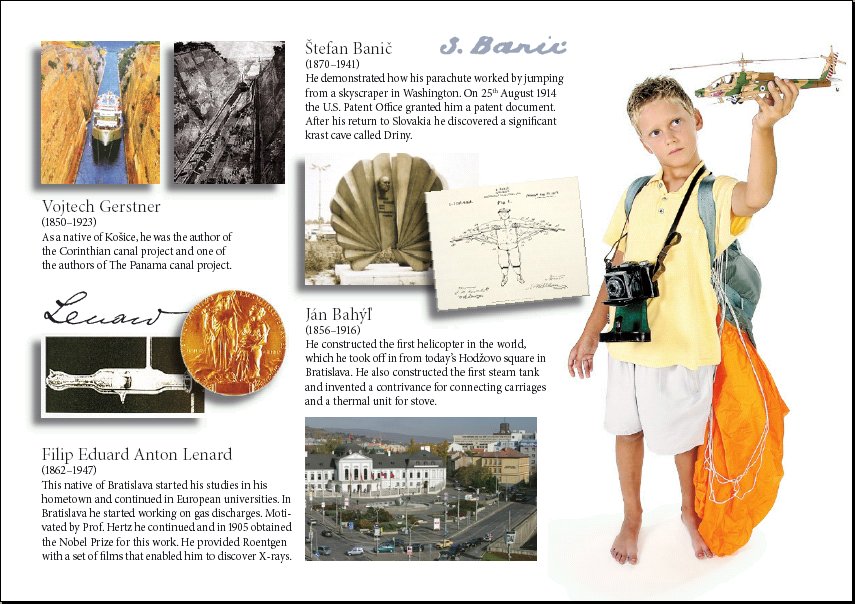
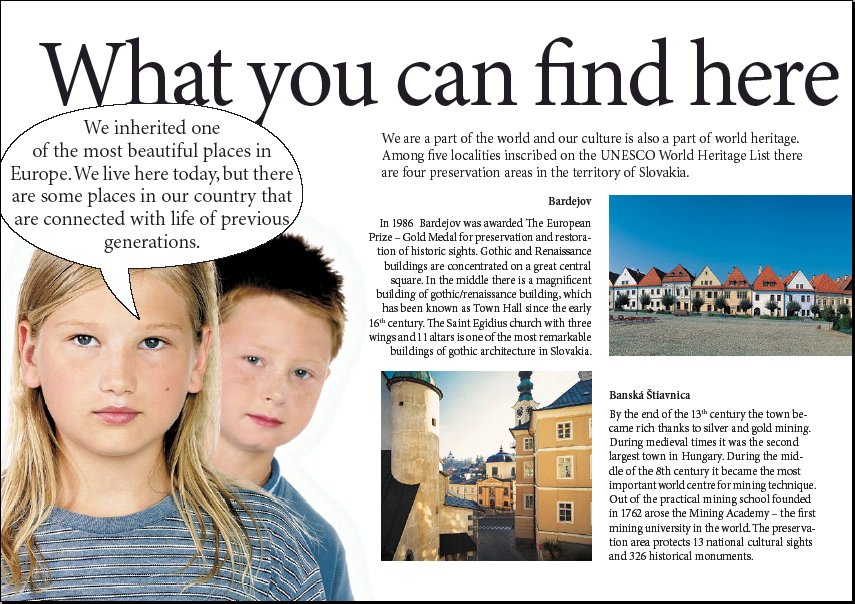
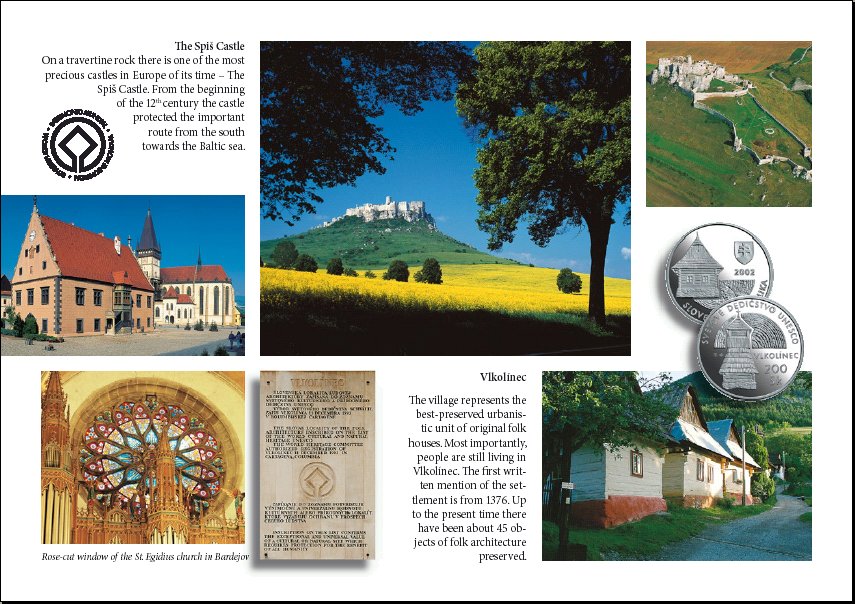
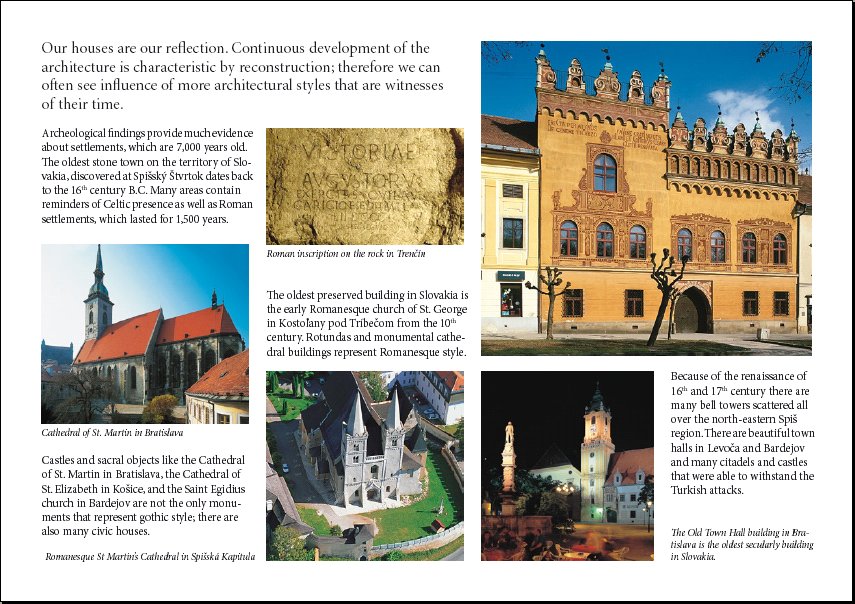

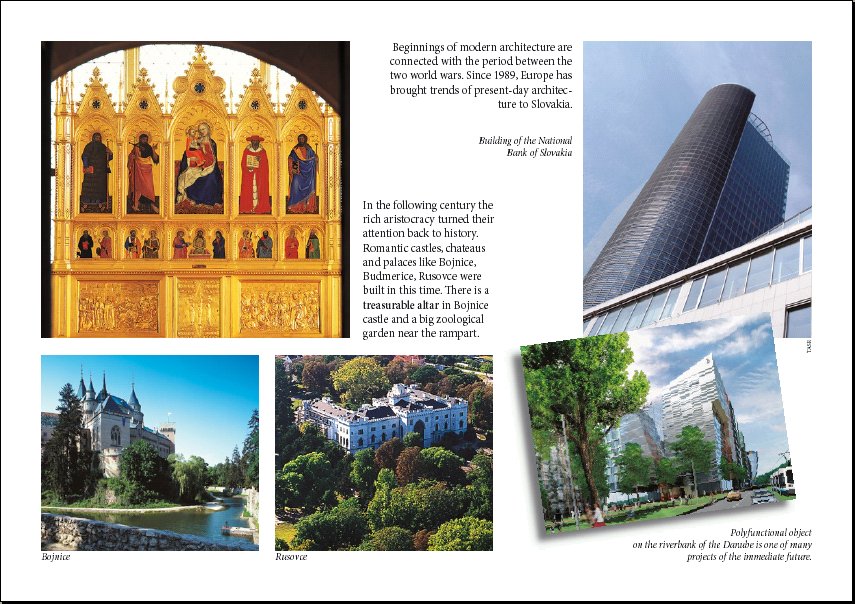
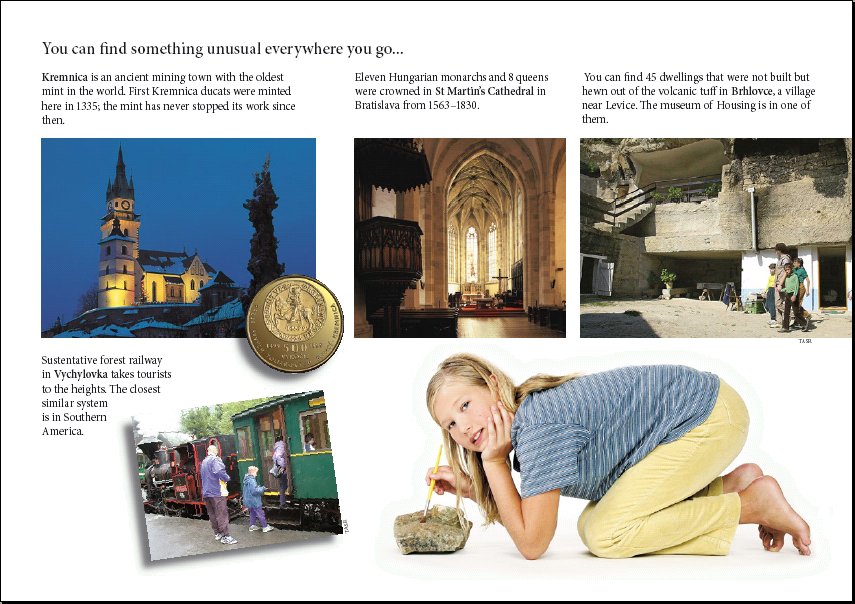
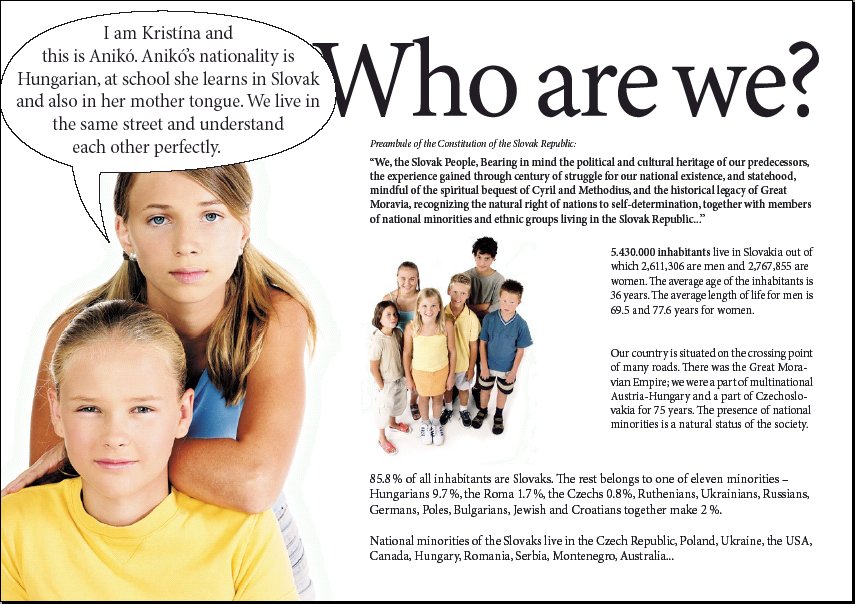
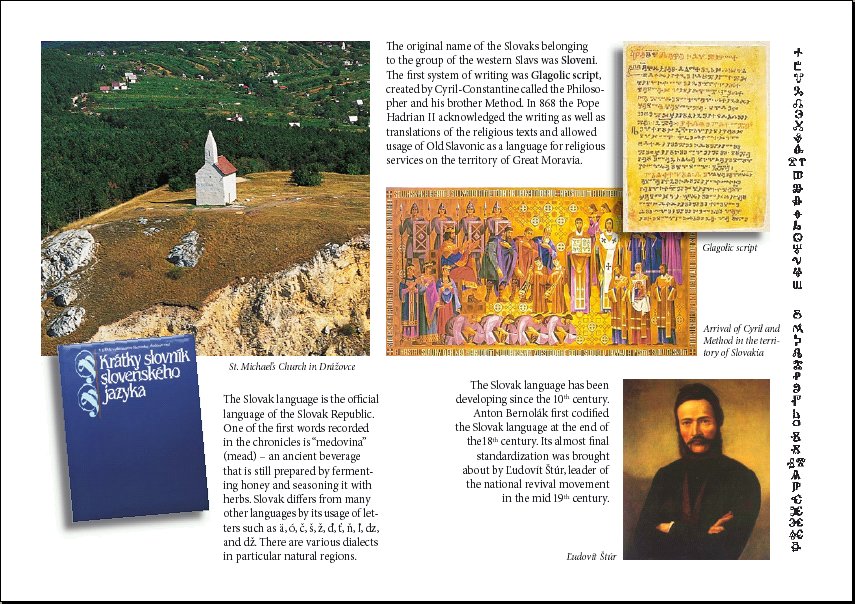
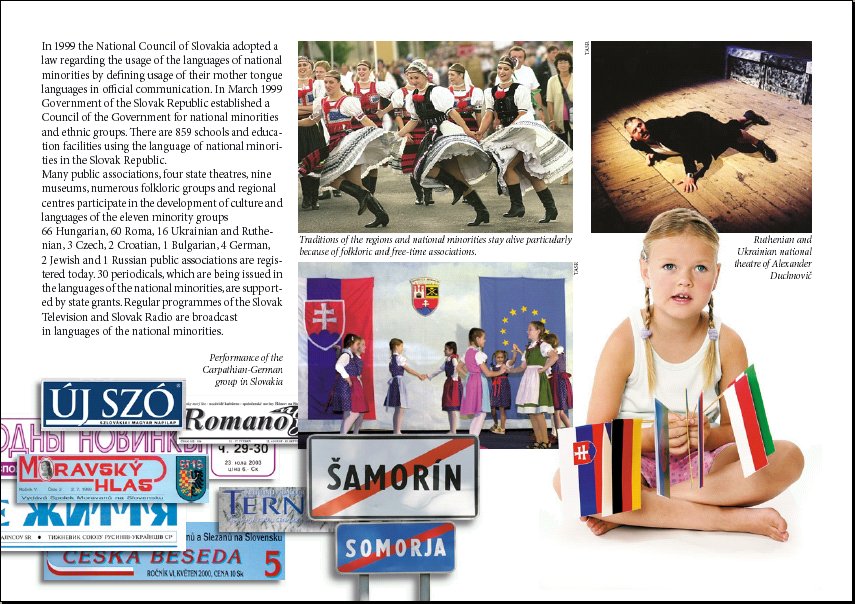

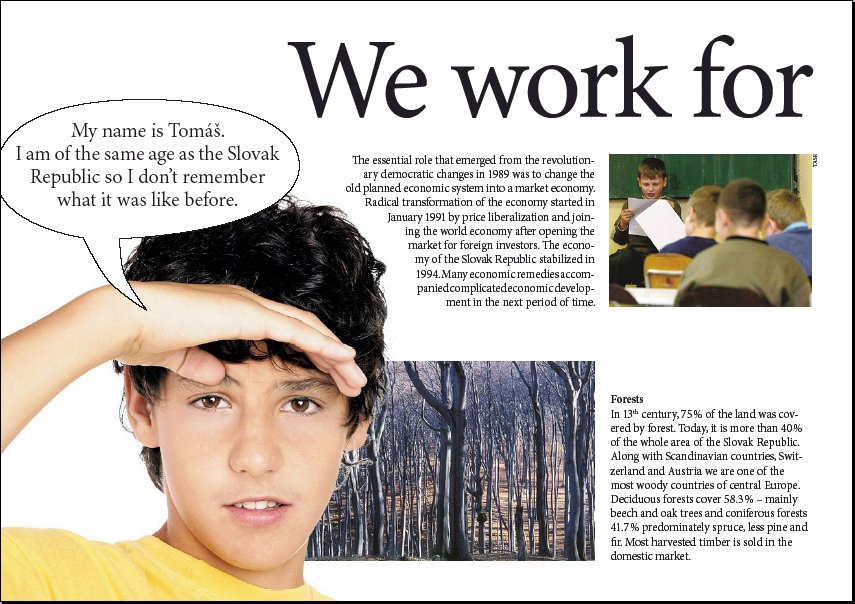
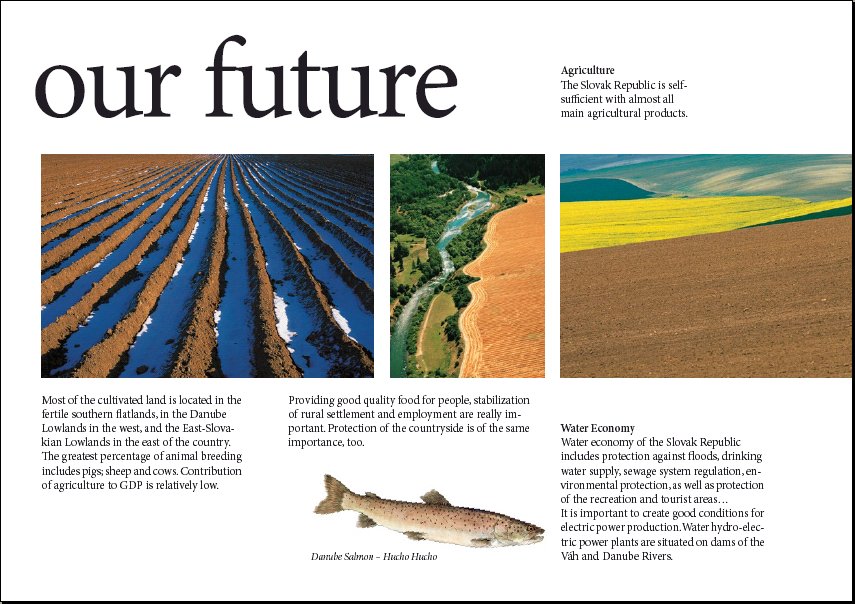
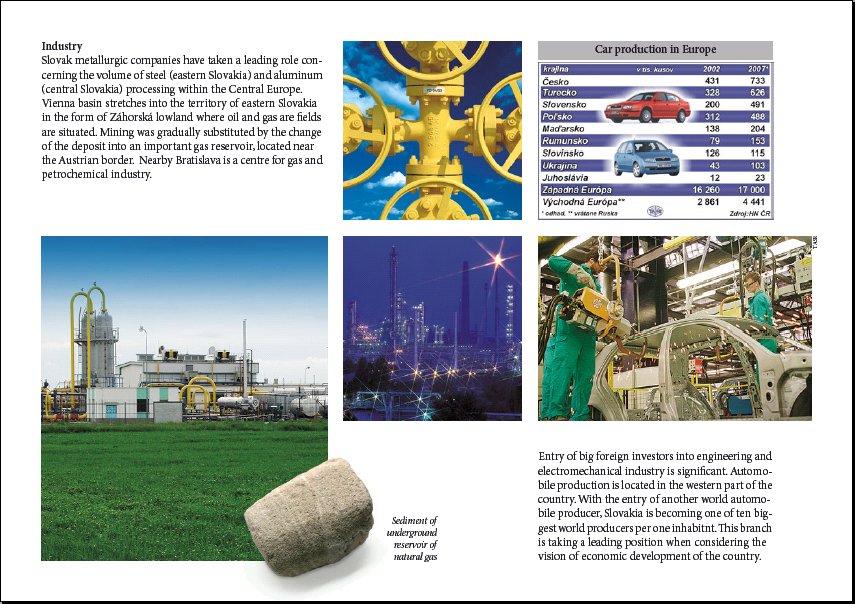
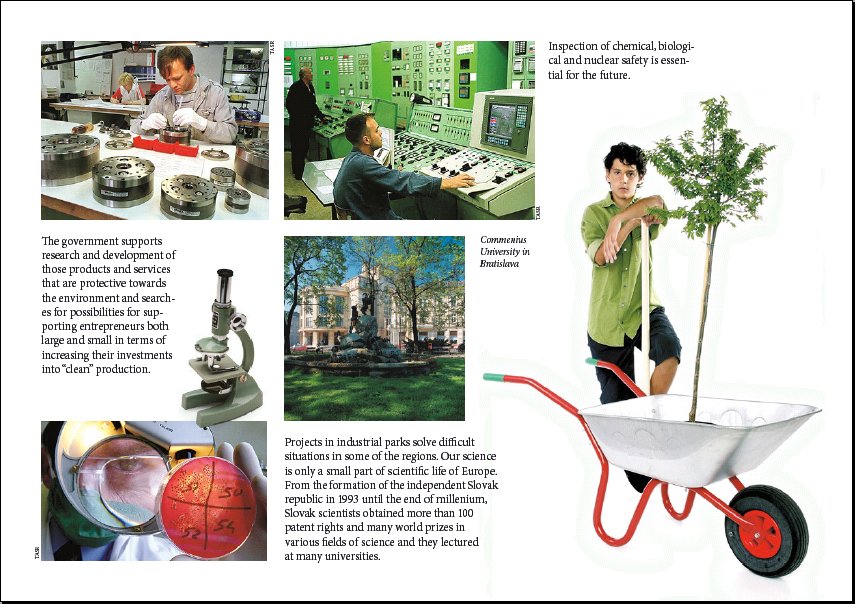
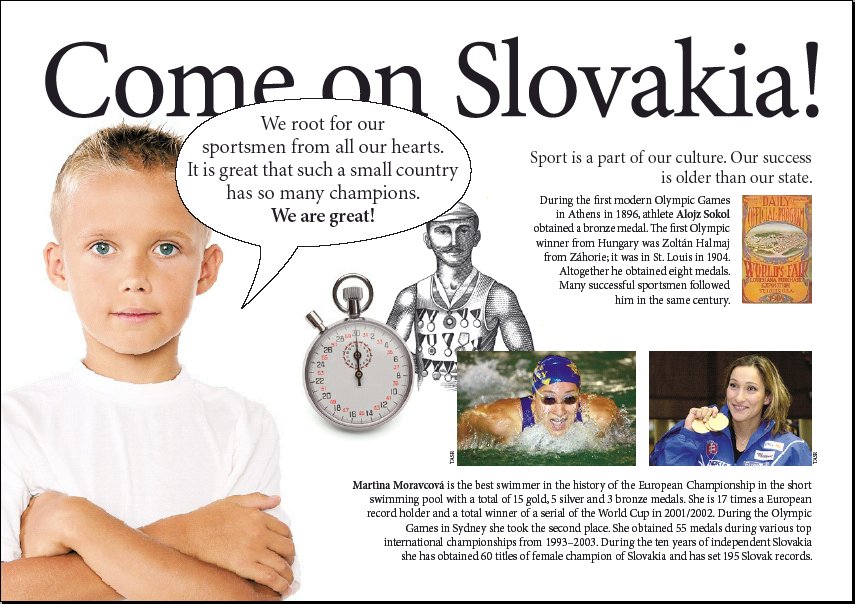
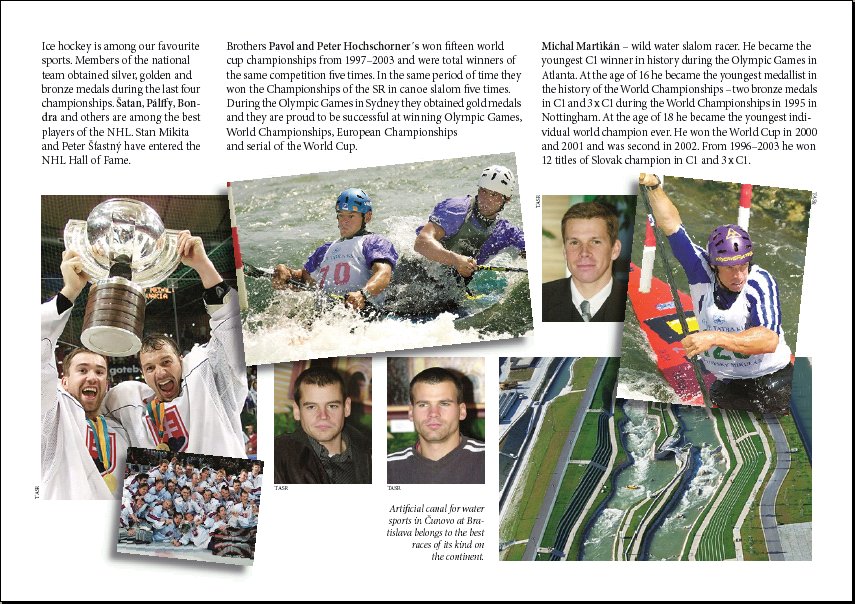
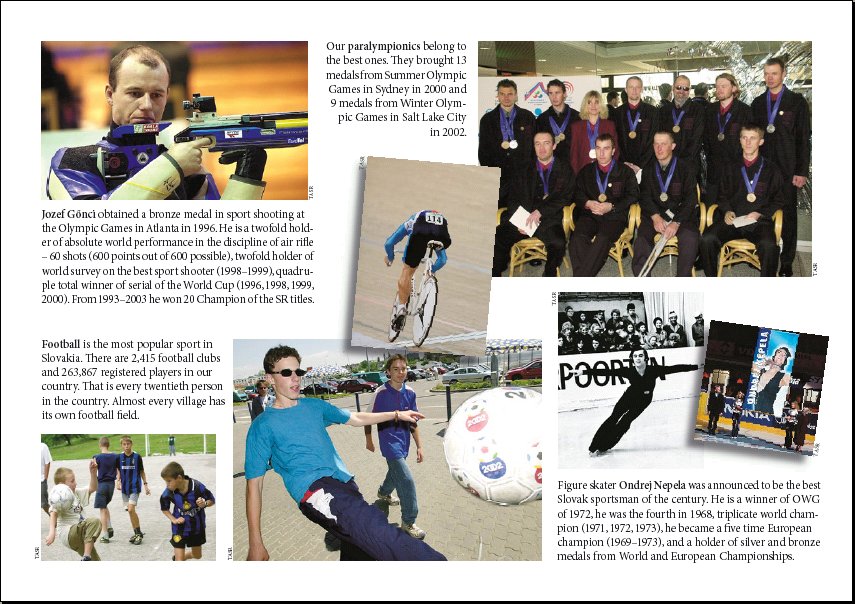
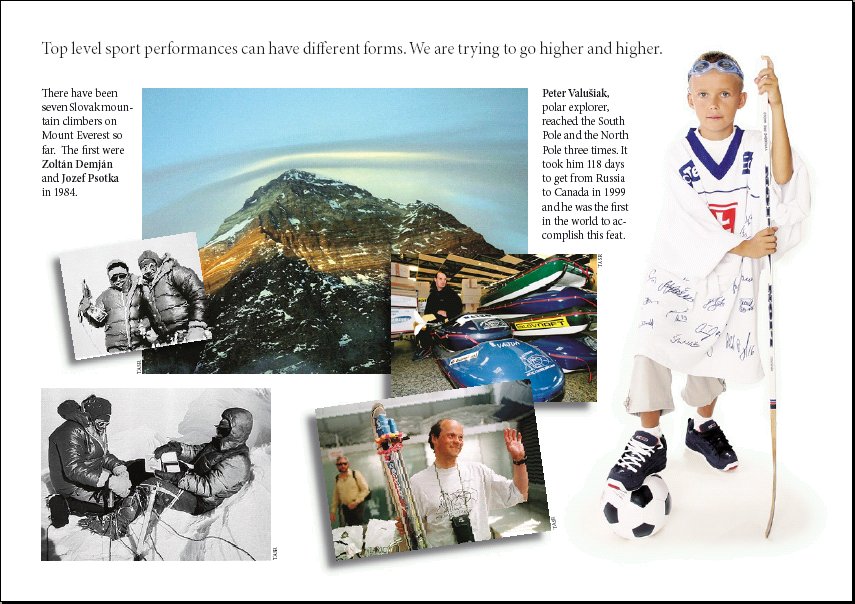
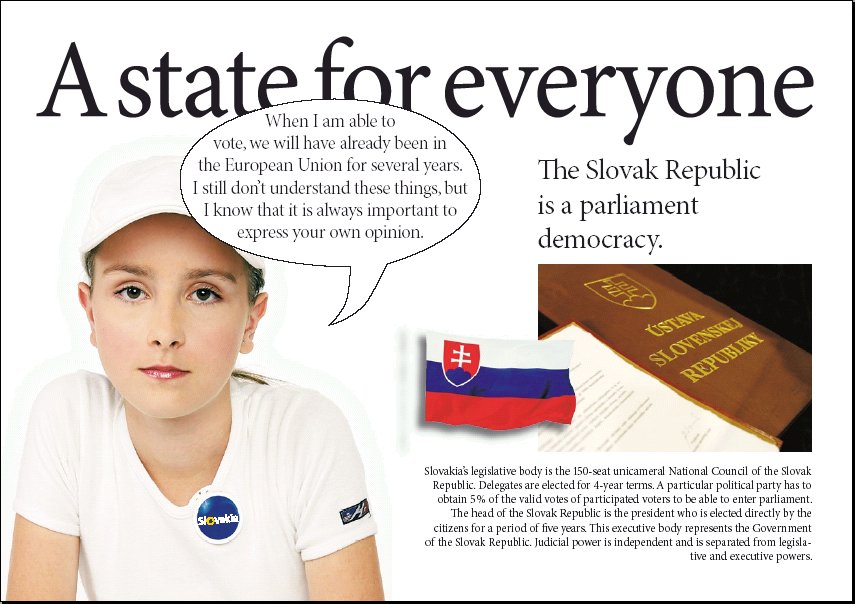
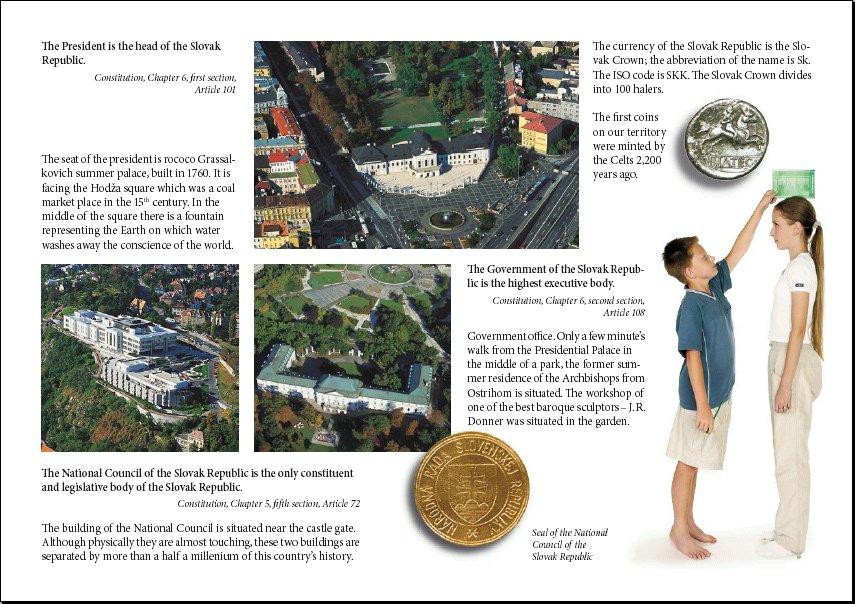

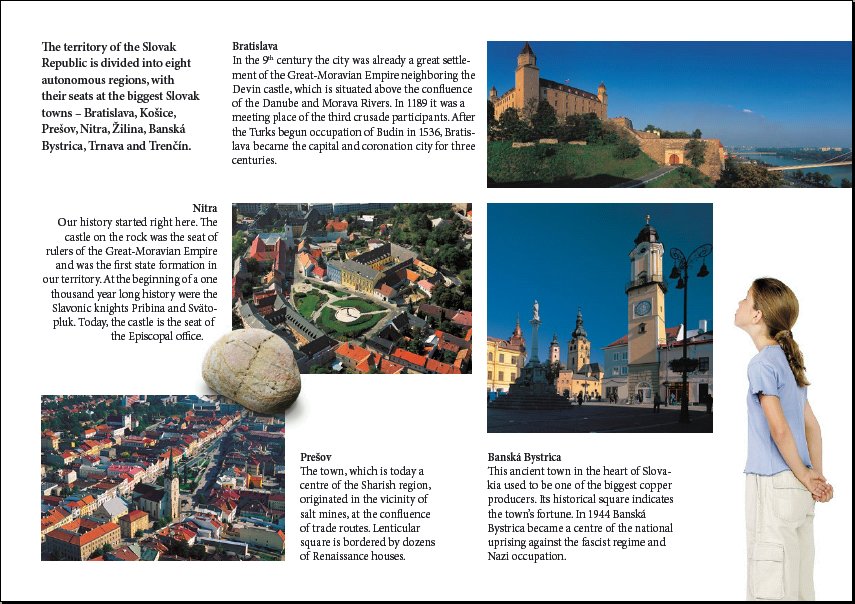
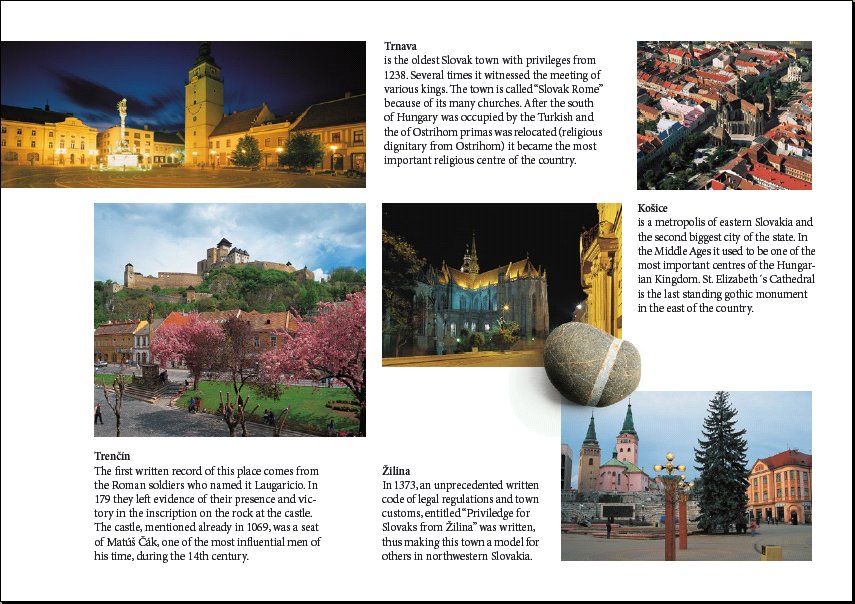
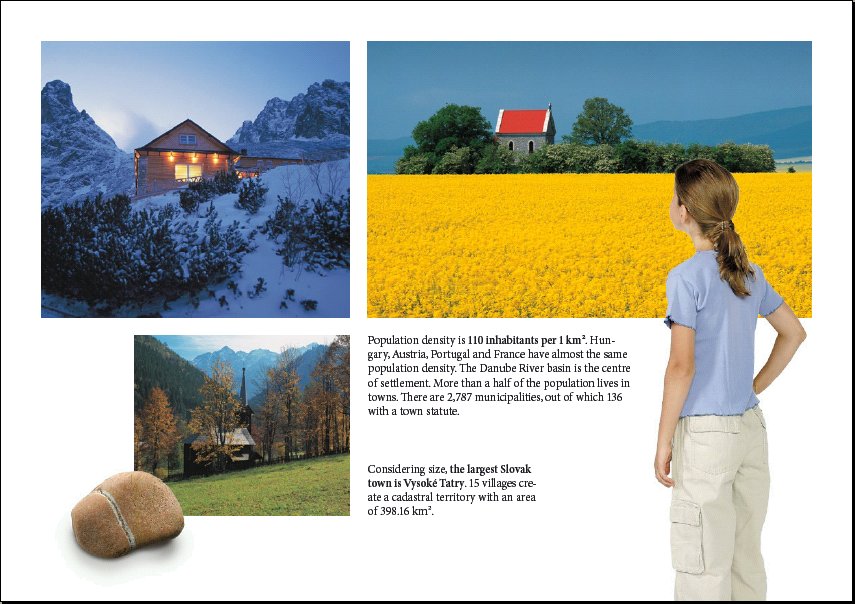
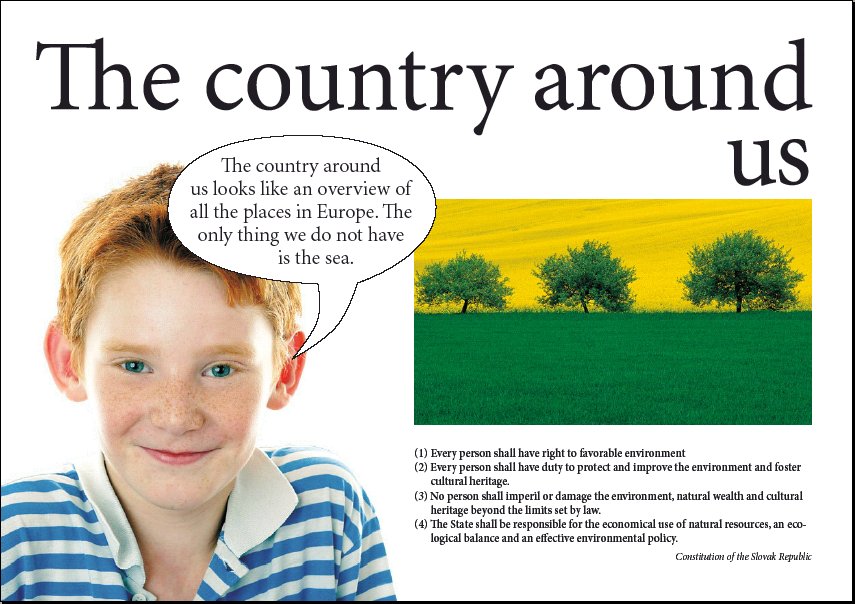
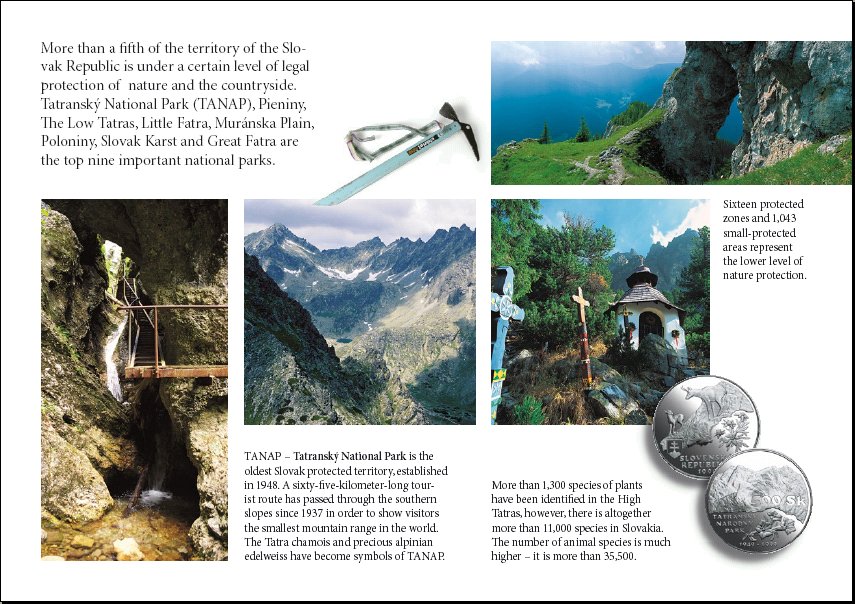
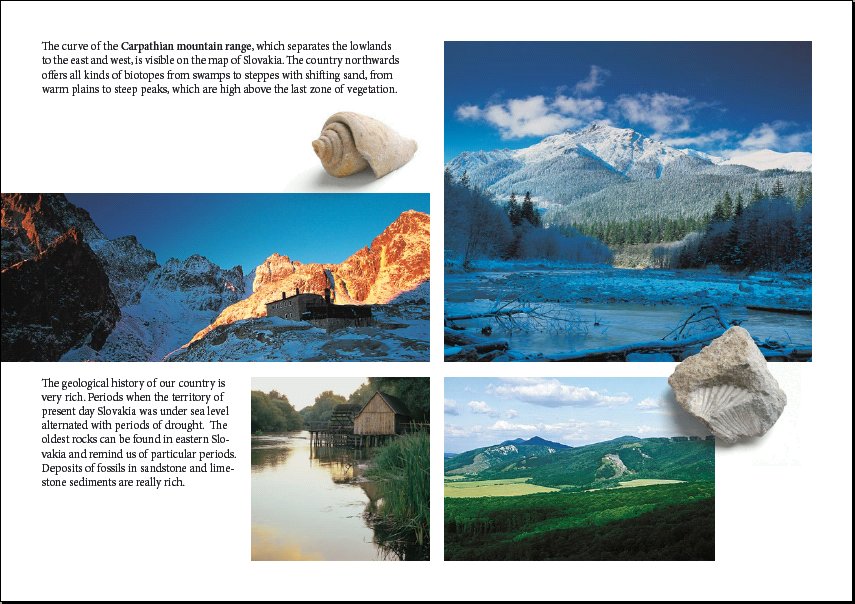
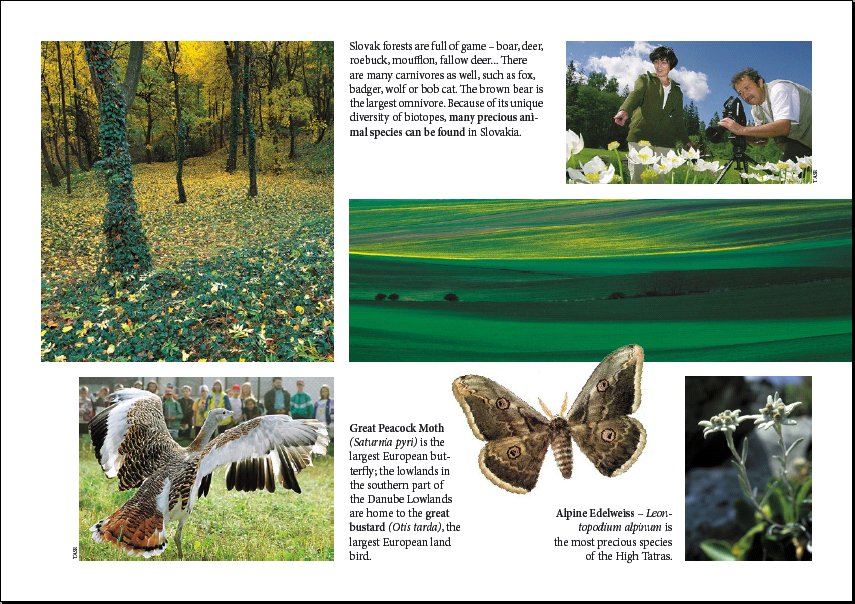
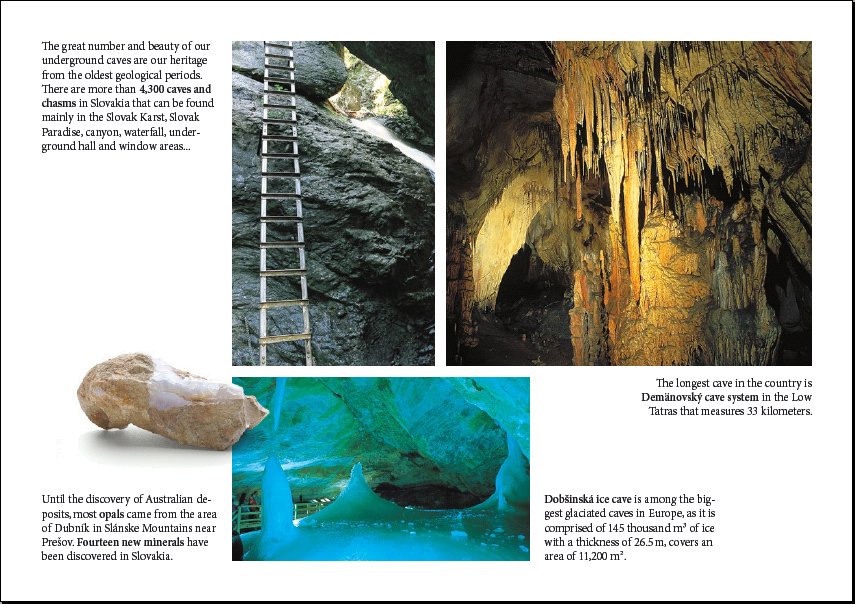
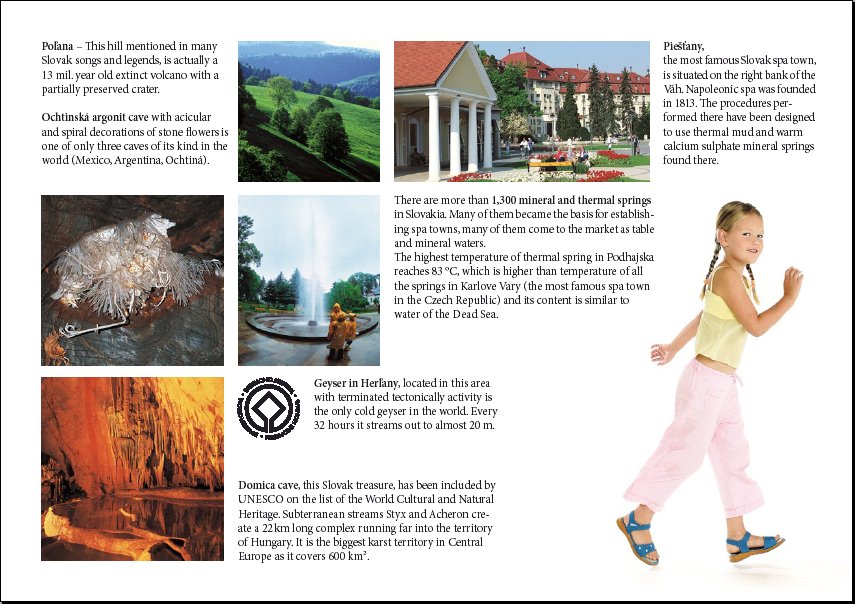
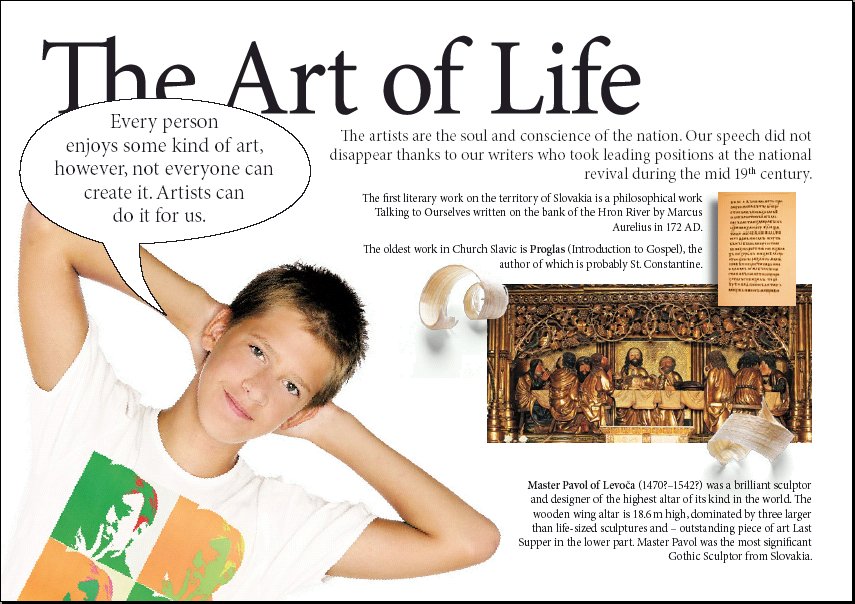

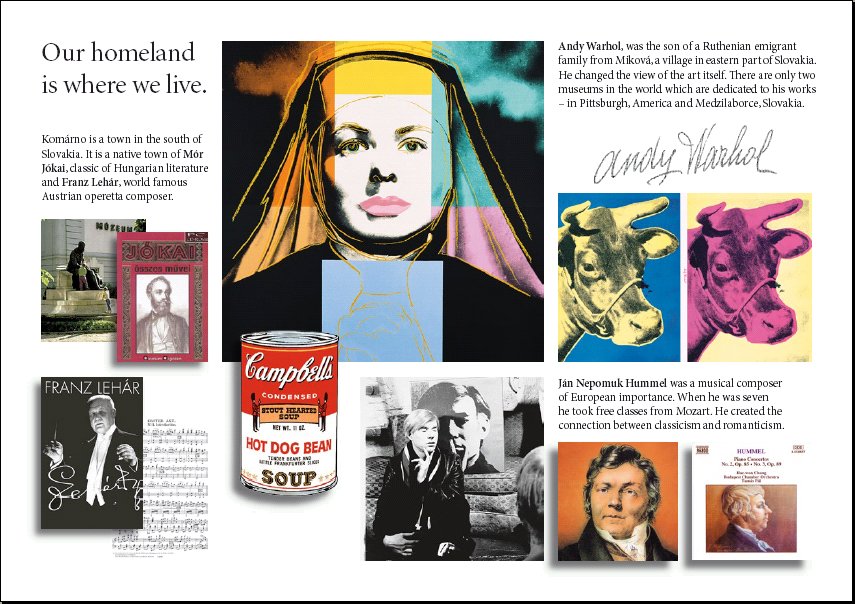

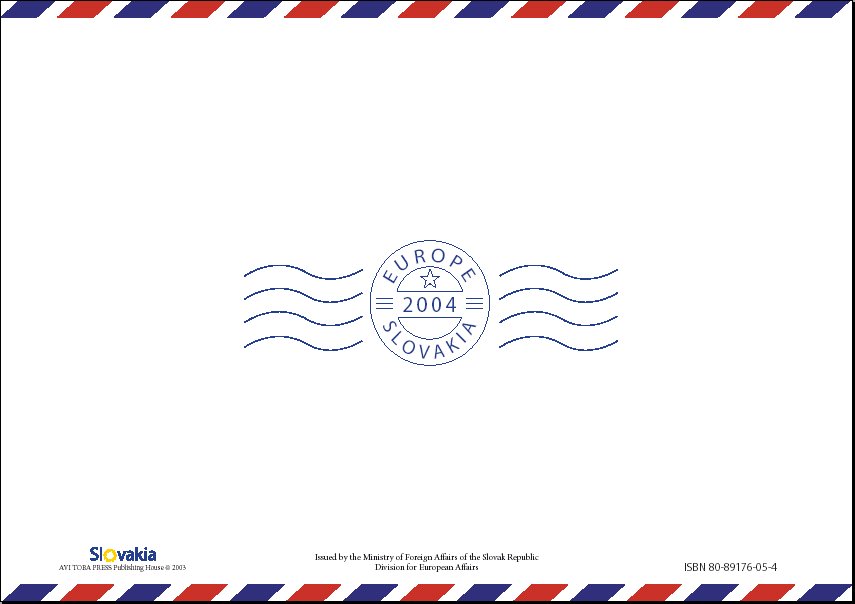
Amministrazione dello stato
La Repubblica Slovacca è nata il 1° gennaio 1993 come uno stato democratico sovrano e con un governo parlamentare. Il presidente della repubblica è eletto direttamente dai cittadini e rimane in carica per 5 anni. L'assemblea nazionale (il parlamento) con poteri legislativi è composta da 150 membri eletti per 4 anni. Il massimo organo governativo è il gabinetto (il governo), presieduto dal primo ministro.
Presidente
Andrej Kiska, eletto il 15 giugno 2014
sito ufficiale
Primo ministro
Robert Fico
sito ufficiale
La lingua ufficiale
Lo slovacco
Superficie
49.035 km2
Posizione
La Slovacchia si trova in Europa centrale. Il nord e il centro del paese è prevalentemente montuoso. Il sud e l'est invece sono prevalentemente pianeggianti e dedite all'agricoltura.
Ora
1 ora prima del Greenwich Time (stesso fuso orario italiano). In estate viene adottata l'ora legale.
Eletricità
La corrente elettrica è a 220 V/50 Hz. La maggior parte degli apparecchi eletrici ha la spina a due cilindretti, comune in tutta l'Europa continentale.
Dogane
Ucraina 95.8 km, Polonia 508.2 km, Austria 115.3 km, Ungheria 630.9 km, Repubblica Ceca 261.3 km.
Clima
La Slovacchia ha un clima moderato, con inverni freddi e rigidi, e con estati temperate e piovose. La temperatura media annuale più bassa è in montagna (IL picco di Lomnicky; -3,7°C ). La zona più calda è la pianura Podunajska (10.3°C).
Popolazione
La Slovacchia ha 5.379.455 di abitanti (2001) di cui 51,4% sono donne.
La popolazione che vive in Slovacchia è così suddivisa: Slovacchi 85,7%, Ungheresi 10,6%, Cechi 1,1%, Rom 1,6%, Ruteni 0,3%, Ucraini, 0,3%, Polacchi e Tedeschi
Capitale
Bratislava (451.616 abitanti)
Religione
Il 68,9% della popolazione è cattolica, il 6,9% sono Evangelici (confessione di Ausburg), il 4,1% Greco-cattolici, 2% Calvinisti, 0.5% Ortodossi
Le feste nazionali
- 1° gennaio - Capodanno, e anniversario della fondazione della Repubblica Slovacca nel 1993.
- 5 luglio - La festa dei Santi Cirillo e Metodio
- 29 agosto - Anniversario della Rivolta Nazionale Slovacca
- 1 settembre - Anniversario della Costituzione
- 17 novembre - Il giorno della lotta contro il totalitarismo.
Giorni festivi/
- 6 gennaio - Festa dei tre re, (I tre re e il Natale per i cristiani ortodossi)
- Venerdì e lunedì di Pasqua
- 1 maggio - Festa del lavoro
- 8 maggio - Giorno della sconfitta del fascismo
- 15 settembre - Festa di Maria Vergine
- 1 novembre - Ognisanti
- 24 dicembre - Vigilia di Natale
- 25 dicembre - Natale (primo giorno di natale)
- 26 dicembre - Santo Stefano (secondo giorno di Natale)
Valuta e Carte di Credito
Moneta
La Slovacchia ha adottato l'euro come valuta ufficiale il 1° gennaio 2009.
Monete in euro
I disegni sono stati scelti con voto pubblico: sulle monete da 0,01, 0,02 e 0,05 euro e' raffigurato il monte Krivan, nella catena dei Monti Tatra; sulle monete da 0,10, 0,20 e 0,50 euro il castello di Bratislava; sulle monete da 1,00 e 2,00 euro lo stemma della Slovacchia (croce patriarcale sulle tre alture).
Carte di Credito
Le maggioni carte di credito (American Express, Diners Club, Visa and MasterCard/Eurocard, Maestro and Visa Electron) possono essere utilizzate per ritirare i contanti dai distributori automatici delle maggiori banche (VUB, TatraBanka, Slovenska Sporitelna) o per pagare negli hotels, nei ristoranti, nei negozi o nei distributori di benzina.
Norme di circolazione
Sulle stradi principali la velocità massima è 90 km all'ora. Sull'autostrada la velocità massima è 130 km all'ora, in città e dentro i paesi 50 km all'ora. I bambini fino 12 anni non possono sedersi davanti accanto al guidatore. Le cinture di sicurezza sono obbligatorie sia davanti sia dietro all'autovettura, anche in città. La macchina deve avere: cassetta di pronto soccorso, cavo rimorchio, triangolo d'emergenza, pneumatico di ricambio
Alcune distanze stradali
- Bratislava - Vienna 60 km
- Bratislava - Praga 350 km
- Bratislava - Zilina 210 km
- Bratislava - Banská Bystrica 213 km
- Banská Bystrica - Kosice 237 km
- Banská Bystrica - Poprad 140 km
- Zilina - Kosice 265 km
I numeri d'emergenza:
- SOS, chiamate d'emergenza 112
- Polizia 112
- Vigili del fuoco 112
- Pronto soccorso - Ambulanza 112, 16155
- Soccorso stradale (ASA Slovakia) 18 124
Prefisso per chiamare la Slovacchia:
00421
More Articles ...
Cultural events see all
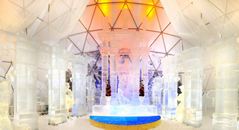
25 November 2016 - 17 April 2017
The Tatra Temple – Tatranský dóm
A basilica of ice in the High Tatras! We are opening on 25th November! The well-known Tatra Temple
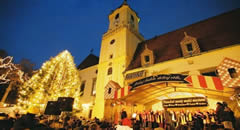
24 November - 22 December 2017
Christmas Markets in Bratislava
Performances of folklore, folk, singing and dancing companies and groups on the Main Square
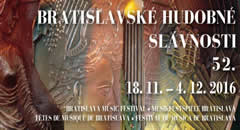
18 november - 4 december 2016
Bratislava Music Festival
The 52nd year of the Bratislava Music Festival is the most important and most prestigious international festival in Slovakia
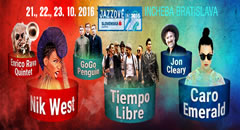
21-23 October 2016
Bratislava Jazz Days SLSP 2016
The international jazz festival BJD is one of the greatest events of this kind in central Europe. The 42end year of the Bratislava Jazz Days
News see all

Did a 17th century Slovakian lawyer invent the smiley face and the hashtag?
Curators find the 'world's first emoji' in a 382-year-old memo. Researchers are claiming to have found the world's oldest emoji - a 382-year-old smiley face. Officially created in the 1980's

Slovakia's Cibulková wins WTA Finals
Dominika Cibulková's records a life achievement after defeating German Angelique Kerber. Dominika Cibulková is the winner of the WTA Finals in Singapore. She beat her opponent, number one in the world ranking, Angelique Kerber, in two sets 6:3, 6:4. The match lasted 77 minutes.

World Championships: Sagan beats Cavendish to defend elite men's world title in Doha.
Peter Sagan (Slovakia) retained his World Championships title in Doha, Qatar with a dominant sprint performance to hold off Mark Cavendish (Great Britain) in second and Tom Boonen (Belgium) in third.

Sagan first Slovak ever to become brand ambassador for Slovakia.
The World and European cycling champion, Peter Sagan is the first personality to bear the honorary title ‘Good Idea Slovakia’ brand ambassador. ‘Good Idea Slovakia’ is a slogan being used to represent




